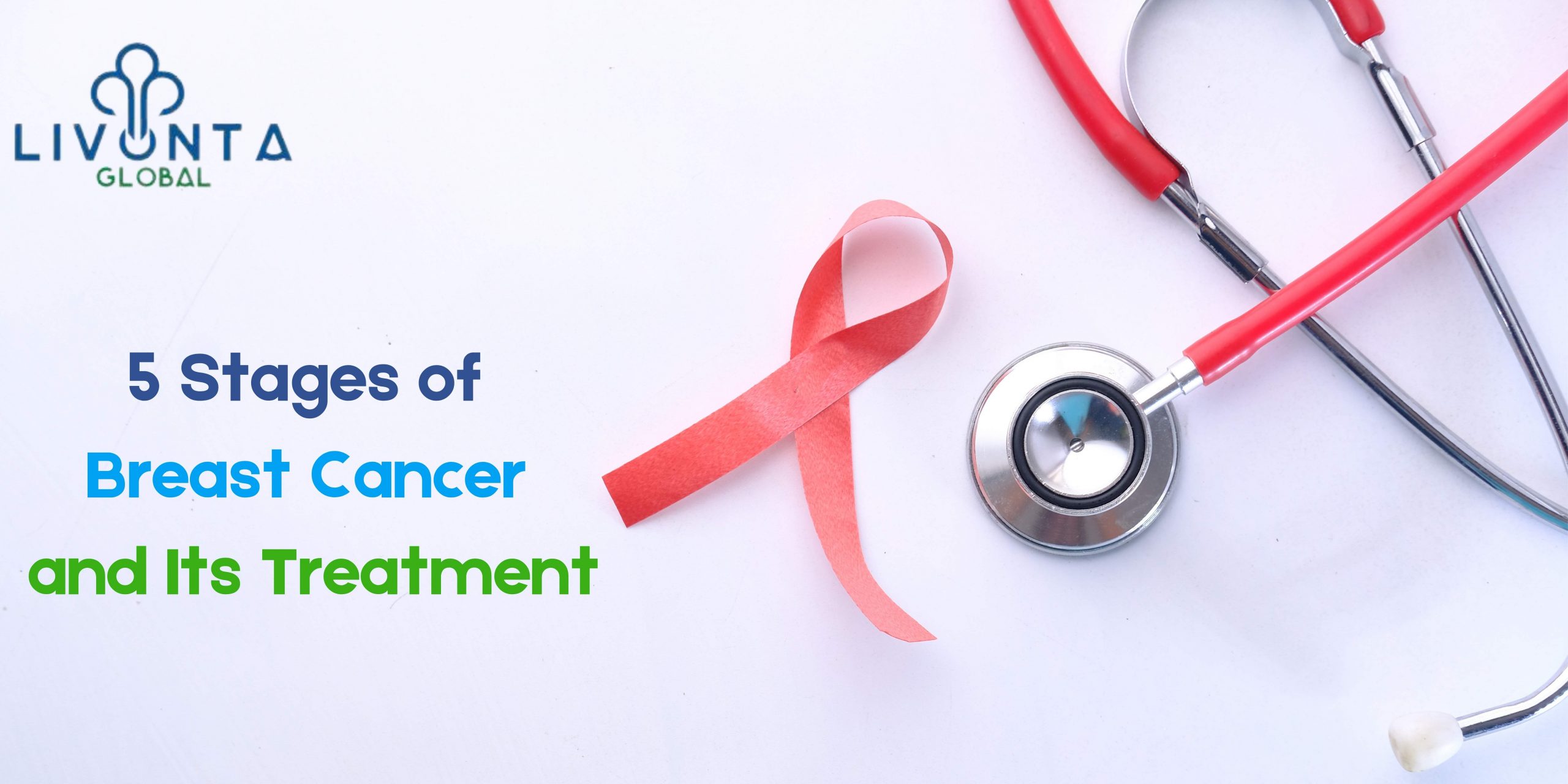
5 Stages of Breast Cancer and Its Treatment
Breast cancer, like other types of cancer, is classified into stages, which determine the severity of the patient’s condition. Breast cancer is divided into five stages, ranging from 0 to IV. These stages are determined by the size of the tumor, its metastasis to nearby lymph nodes, and its spread to other regions of the body.
According to specialists in cancer treatment in India, the severity of the condition grows with each stage of development. Awareness of the phases of breast cancer and how to manage it can be aided by having a firm understanding of the stages.
The Stages of Breast Cancer
Breast Cancer Stage 0
Stage 0 cancer is non-invasive, meaning it hasn’t spread to neighboring blood vessels, tissues, or healthy cells. However, physicians say that because there are no apparent signs, this stage is hard to diagnose. Because DCIS can expand quickly, surgical therapy is suggested. Because LCIS cells are rarely malignant, only close observation is recommended. Patients should get in touch with the best cancer treatment in India to get it cured in the early stage if detected.
It’s also known as carcinoma in situ, and it’s a very early stage of cancer. There are two types of it:
DCIS (ductal carcinoma in situ) is a type of breast cancer that develops in the ducts of the breast (tubes that carry breast milk from the breast lobules to the nipples).
Lobular carcinoma in situ (LCIS) is a condition in which abnormal cells form in the lobule.
Breast Cancer Stage I
It’s an early yet aggressive stage of breast cancer, meaning the tumor is likely to spread to nearby healthy tissues or has already done so. The cancer cells spread throughout the breast tissues, well beyond their original location. Stage II can be detected early by screening, but due to the lack of critical symptoms, it is difficult to detect. The tumor is about 20 mm in diameter or less in stage I.
Breast Cancer Stage II
The tumor is between 2cm and 5cm in size in Stage II, and the cancer cells have migrated to the armpit lymph nodes. In this stage, up to three lymph nodes are usually involved.
Breast Cancer Stage III
Doctors refer to this stage as “locally advanced illness,” which implies the tumor is growing and has grown to a size of more than 5cm but has not spread to other organs.
Breast Cancer Stage IV
In the final and most severe stage, cancer spreads to one or more regions of the body, such as the lungs, liver, bones, or brain.
Treatment and cervical chances
For stage 1 and 2 breast cancer, doctors undertake breast conservation or breast-sparing surgery. The goal of this procedure is to salvage as much healthy breast tissue as possible. This technique consists of a lumpectomy (removal of the tumor and some of the surrounding normal tissue) and a partial mastectomy (removal of the tumor and some of the surrounding normal tissue or partial removal of the breast that has cancer). After the tumor has been surgically removed, a patient can choose to have breast reconstruction to receive new breasts.
If the cancer is stage III, a medication called Neoadjuvant chemotherapy is used to shrink the tumor before surgery rather than after. Doctors focus on expanding the patient’s long-term vitality rather than mainly treating them in stage IV.
The distinction is evident for anyone seeking to comprehend the phases of cancer. Stages 0 to 3 are considered ‘curable,’ but stage IV is considered ‘incurable,’ but there are effective treatments available to help a patient live longer and live better.
Cancer Treatment
Tags: breast cancer, Breast cancer treatment, early stages, the tumor

